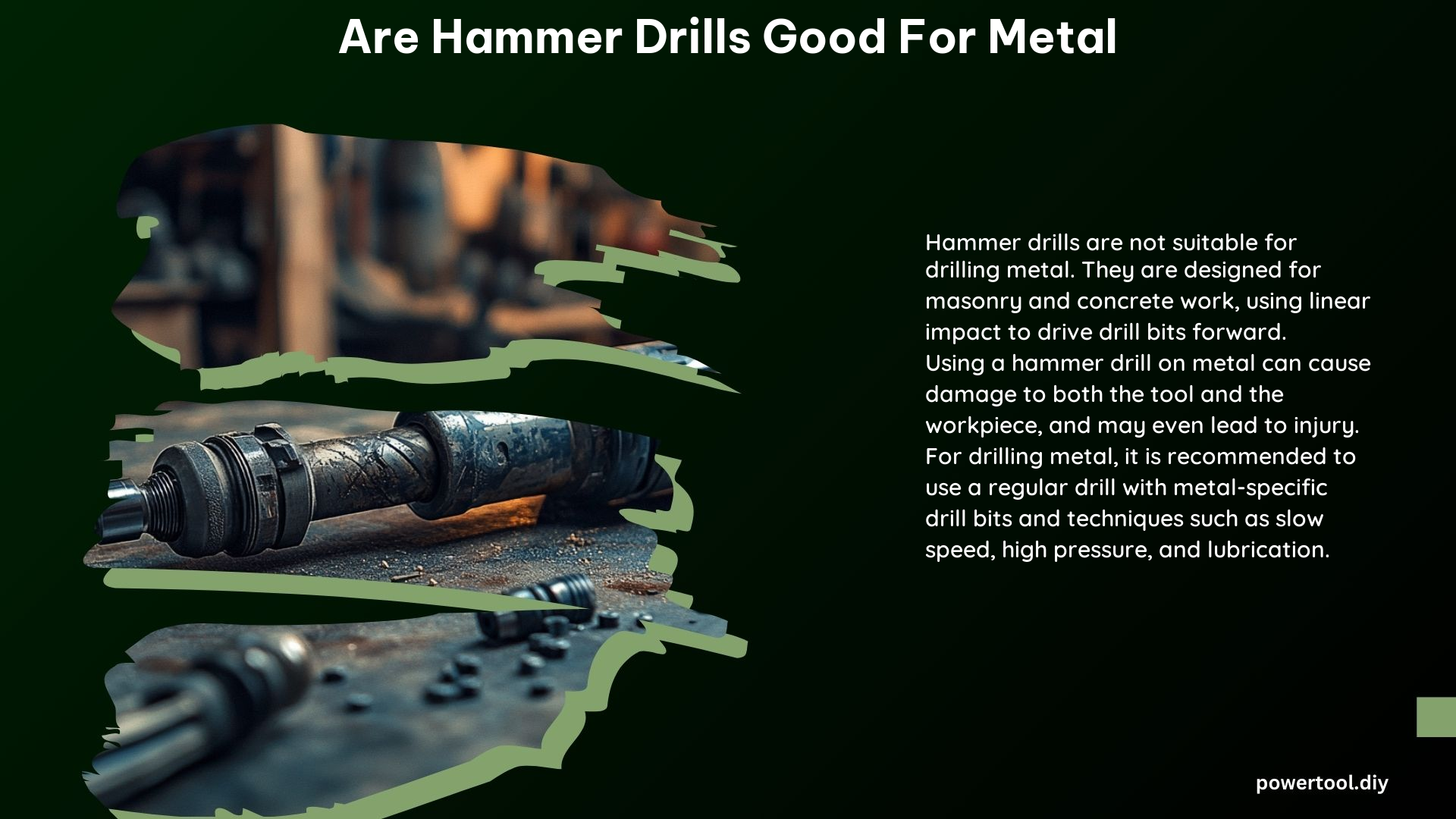Hammer drills are a versatile power tool commonly used for drilling into masonry materials like concrete, brick, and stone. However, when it comes to drilling into metal surfaces, hammer drills may not be the most suitable choice. This comprehensive guide will delve into the technical specifications, mechanisms, and best practices for using hammer drills on metal, as well as explore alternative tools that may be more effective for this task.
Mechanism: Linear Impact vs. Rotary Impact
The primary mechanism that distinguishes hammer drills from regular drills is the linear impact action. Hammer drills generate a rapid series of linear impacts, which makes them highly effective for drilling into masonry materials. This linear impact mechanism, however, is not optimized for drilling into metal.
In contrast, tools designed for metal drilling, such as impact wrenches, utilize a rotary impact mechanism. This mechanism provides a more efficient and controlled drilling action, better suited for the hardness and friction encountered when drilling into metal surfaces.
Damage Risk: Kickback and Bit Damage

Using a hammer drill on metal can pose a significant risk of damage to both the drill bit and the metal being drilled. The linear impact action of a hammer drill can cause the bit to bind or catch in the metal, leading to sudden kickback. This kickback can not only damage the drill bit but also pose a safety hazard to the operator.
Moreover, the repeated linear impacts of a hammer drill can cause premature wear and tear on the drill bit, reducing its lifespan and effectiveness. This is particularly problematic when drilling into harder metals, such as stainless steel or titanium.
Drill Bit Selection: Masonry vs. Metal-Specific Bits
Hammer drills are typically used with masonry-specific drill bits, which are designed to withstand the linear impact action and effectively penetrate materials like concrete and brick. These bits, however, are not optimized for drilling into metal.
For metal drilling, it is recommended to use specialized drill bits, such as High-Speed Steel (HSS), Black Oxide, Cobalt steel, or Titanium bits. These bits are engineered to handle the increased hardness and friction encountered when drilling into metal surfaces. They feature sharper cutting edges, improved heat resistance, and enhanced durability compared to standard masonry bits.
Drilling Technique: Speed, Pressure, and Cutting Fluids
Drilling into metal requires a different technique than drilling into masonry materials. When using a hammer drill on metal, it is essential to:
-
Slower Speeds: Reduce the drill speed to a slower, more controlled pace, typically in the range of 300-600 RPM. This helps to minimize the risk of bit binding and damage.
-
Consistent Pressure: Apply steady, consistent pressure on the drill, rather than relying on the hammer action. This helps to maintain control and prevent kickback.
-
Cutting Fluids: Use cutting fluids, such as oil or WD-40, to reduce heat and friction during the drilling process. This helps to extend the life of the drill bit and improve the overall quality of the drilled hole.
Alternative Tools: Regular Drills and Impact Wrenches
While hammer drills are not the best choice for drilling into metal, there are alternative tools that are better suited for this task. Regular drills, with their rotary impact mechanism, can be a more effective option for metal drilling. These tools provide better control and are less likely to cause damage or kickback.
Another alternative is the impact wrench, which also utilizes a rotary impact mechanism. Impact wrenches are specifically designed for applications that require high torque, such as drilling and threading holes in metal. They offer superior control and efficiency compared to hammer drills when working with metal surfaces.
Conclusion
In summary, while hammer drills are excellent for drilling into masonry materials, they are not the best choice for drilling into metal surfaces. The linear impact mechanism of a hammer drill is not optimized for metal drilling, and using one can lead to damage to both the drill bit and the metal being drilled. For metal drilling, it is recommended to use specialized drill bits and techniques, or to consider alternative tools like regular drills or impact wrenches that are better suited for this task.
By understanding the technical specifications, mechanisms, and best practices for using hammer drills on metal, DIY enthusiasts and professionals can make informed decisions and ensure safe and effective metal drilling projects.
